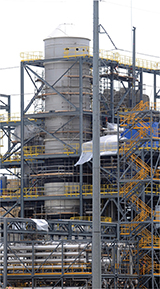Figure 41 The carbon capture system of this power plant in West Virginia helps to reduce the CO2 emissions from burning coal.

Limiting Global Warming Despite the known effects of greenhouse gas emissions, fossil fuels remain a widespread energy resource. More than 85 percent of the world's energy needs are supplied by fossil fuels. Power plants burn coal; cars burn gasoline or diesel. How, then, can we reduce greenhouse gas emissions? There is no single easy solution, but we have a number of options available to us.
One of the simplest ways to reduce greenhouse gas emissions is to conserve energy. By eliminating bad habits that waste electricity, you consume less energy, which means less fossil fuel burned and less CO2 emitted. Another option is to improve the efficiency of energy- consuming technologies. For example, developing more fuel-efficient cars will allow drivers to get more miles per gallon of fuel. At home, you can save energy by using more efficient lighting technologies, such as compact fluorescent lights (CFLs) or light emitting diodes (LEDs).
Clean energy sources offer a more groundbreaking solution to the global warming problem. Clean energy refers to energy sources that release very low amounts of greenhouse gases. Examples include solar, wind, hydroelectric, biomass, geothermal, tidal, and nuclear energy. Switching to clean energy for even a small portion of your daily energy consumption—such as heating hot-water or recharging electronic devices—can add up to a substantial reduction in CO2 emissions.
Another technological solution is carbon capture, shown in Figure 41. In conventional coal-burning power plants, the CO2 produced during combustion escapes into the atmosphere as exhaust. However, CO2 can be removed either during or after the combustion process. The collected CO2 then is pumped back into the ground. This process greatly reduces the “carbon footprint” of coal-burning power plants.
Section 24.7 Assessment
Reviewing Concepts
 How do climate and weather differ?
How do climate and weather differ? What are the two main factors that determine a region's climate?
What are the two main factors that determine a region's climate? How can past climates be studied?
How can past climates be studied? What natural forces cause climate change?
What natural forces cause climate change? How do human activities impact Earth's climate?
How do human activities impact Earth's climate?
Critical Thinking
Applying Concepts Why do you think there is more precipitation in southern Florida than there is in northern Alaska?
Inferring Would a single unusually hot summer prove that global warming is occurring? Explain your answer.
Connecting Concepts
Energy Resources Recall what you learned about nuclear energy, renewable energy resources, and conservation in Chapters 10 and 15. Choose one of those resources and describe how its use might help to reduce global warming.




